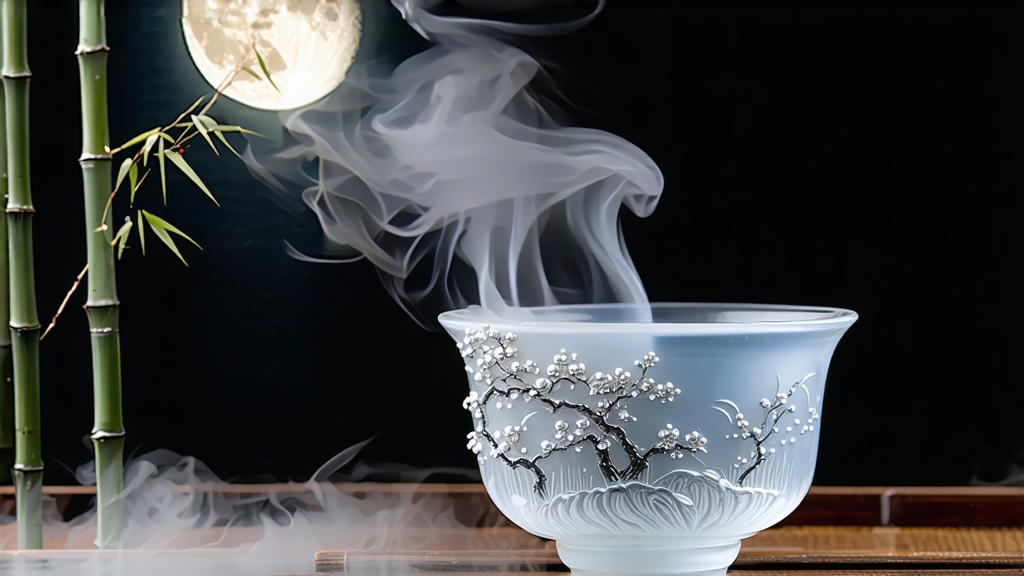
When Chinese tea lovers speak of “white tea,” they are not referring to a pale infusion alone but to an entire philosophy of restraint. Among the three orthodox styles certified as white tea—Silver Needle, White Peony, and Shou Mei—Silver Needle (Bai Hao Yin Zhen) stands as the quiet aristocrat, a tea so delicate that it is literally picked before the dawn mist lifts and handled only by gloved fingers thereafter. To understand China’s most subtle tea category, one must begin with this single-bud masterpiece born in the granite hinterlands of northern Fujian.
Historical whispers place Silver Needle’s origin during the early Song dynasty (960-1279), yet credible written records surface only in 1796, when the Fuding county gazette noted tribute cakes made entirely of downy buds. By the late Qing, the court in Beijing had shifted from compressed bricks to loose, needle-shaped buds that could be appraised at a glance; the emperor’s censors graded them by the density of silvery trichomes, believing the down stored spring’s yang energy. Export documents from 1891 list “Yin Zhen” among the first Chinese teas to reach London docks, where Victorian merchants christened it “Silver Tip Pekoe,” a name still printed on antique tins auctioned today.
Geographically, authentic Silver Needle comes from two micro-zones: Fuding on the rugged coast of the East China Sea and Zhenghe in the cooler interior mountains. Fuding’s granitic soil drains quickly, forcing the Da Bai cultivar to send sugars to its youngest buds; the result is a creamier liquor with marine minerality. Zhenghe’s higher altitude and loamier earth yield buds that are slightly slimmer yet richer in amino acids, translating into a more pronounced umami sweetness. Purists debate which terroir reigns, but connoisseurs simply cherish both, much as wine lovers appreciate Left and Right Bank Bordeaux.
The crafting of Silver Needle is disarmingly simple on paper: pick, wither, dry. Yet each step is a tightrope above ruin. Plucking occurs only during a brief climatic window—clear mornings between mid-March and early April when the bud reaches 2.5–3 cm but has not unfurled into a leaf. Experienced pickers use thumbnails, never scissors, to avoid the microscopic bruise that would oxidize into an off-putting crimson tinge. A full kilogram of finished tea demands roughly thirty thousand buds, all gathered before ten o’clock so that the dew acts as a natural humidifier during the hours-long wither.
Withering is the soul of white tea. Traditionally the buds are laid on bamboo trays stacked like screens in a gentle breeze; modern facilities replicate this with climate-controlled tunnels set to 26 °C and 65 % humidity. Over thirty-six to forty-eight hours the moisture content drops from 75 % to 10 %, while endogenous enzymes convert starches into soluble sugars and coax out a medley of volatile aromatics—linalool, geraniol, and hotrienol—responsible for the tea’s signature honeysuckle note. Crucially, no tossing, rolling, or pan-fixation interrupts the process; oxidation proceeds at a glacial pace, landing Silver Needle in the 5–10 % range, enough to soften grassiness yet preserve a silvery-green hue.
Drying can be achieved two ways. The orthodox method is “sun-worshipping”: trays are angled toward the oblique spring sun for twenty minutes, then rested in shade to prevent case-hardening. Artisans read the sky like sailors, covering buds at the first hint of cloudburst. When weather rebels, they resort to charcoal baking inside a rammed-earth chamber maintained at 40 °C, a technique that adds a whisper of ember warmth but risks masking the pristine aroma. The finished tea must pass a final hand-sort: any bud whose tip has browned is plucked out, ensuring a uniform pewter color that glints like frost under light.
Judging quality begins with sight. Hold a sample against matte black paper: premium needles show a homogenous ivory body capped by an unbroken silvery dome; lower grades reveal greenish stems or sepia bruises. Rub a bud between thumb and forefinger; the trichomes should powder like talc, releasing a scent reminiscent of fresh melon rind. Upon brewing, the liquor should glow pale apricot, never straw yellow, and the spent buds ought to stand upright in the glass like a miniature bamboo forest, proof of intact cellular